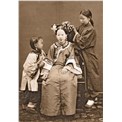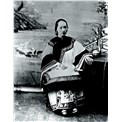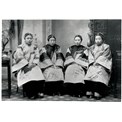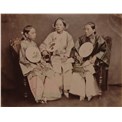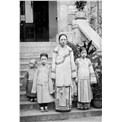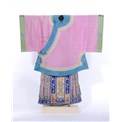-
History & Society
- Education in Pre-war Hong Kong
- History of Taikoo Sugar Refinery
- Hong Kong Products Exhibition
- Local Festivals Around the Year
- Post-war Industries
- Pre-war Industry
- The Hong Kong Jockey Club Archives
- Tin Hau Festival
- Memories We Share: Hong Kong in the 1960s and 1970s
- History in Miniature: The 150th Anniversary of Stamp Issuance in Hong Kong
- A Partnership with the People: KAAA and Post-war Agricultural Hong Kong
- The Oral Legacies (I) - Intangible Cultural Heritage of Hong Kong
- Hong Kong Currency
- Hong Kong, Benevolent City: Tung Wah and the Growth of Chinese Communities
- The Oral Legacies Series II: the Representative List of the Intangible Cultural Heritage of Hong Kong
- Braving the Storm: Hong Kong under Japanese Occupation
- A Century of Fashion: Hong Kong Cheongsam Story
Geography & EnvironmentArt & Culture- Calendar Posters of Kwan Wai-nung
- Festival of Hong Kong
- Ho Sau: Poetic Photography of Daily Life
- Hong Kong Cemetery
- Sketches by Kong Kai-ming
- The Culture of Bamboo Scaffolding
- The Legend of Silk and Wood: A Hong Kong Qin Story
- Journeys of Leung Ping Kwan
- From Soya Bean Milk To Pu'er Tea
- Applauding Hong Kong Pop Legend: Roman Tam
- 他 FASHION 傳奇 EDDIE LAU 她 IMAGE 百變 劉培基
- A Eulogy of Hong Kong Landscape in Painting: The Art of Huang Bore
- Imprint of the Heart: Artistic Journey of Huang Xinbo
- Porcelain and Painting
- A Voice for the Ages, a Master of his Art – A Tribute to Lam Kar Sing
- Memories of Renowned Lyricist: Richard Lam Chun Keung's Manuscripts
- Seal Carving in Lingnan
- Literary Giant - Jin Yong and Louis Cha
Communication & Media- Hong Kong Historical Postcards
- Shaw Brothers’ Movies
- Transcending Space and Time – Early Cinematic Experience of Hong Kong
- Remembrance of the Avant-Garde: Archival Camera Collection
- Down Memory Lane: Movie Theatres of the Olden Days
- 90 Years of Public Service Broadcasting in Hong Kong
- Multifarious Arrays of Weaponry in Hong Kong Cinema
-
History & SocietyGeography & EnvironmentArt & Culture
-
View Oral History RecordsFeatured StoriesAbout Hong Kong Voices
-
Hong Kong Memory
The early forms of cheongsam (2)
In the 1920s, an early form of the cheongsam re-emerged that traced its origins back to the gown of Manchu women of the Qing dynasty but also incorporated contemporary fashion elements. Like the Manchu gown, it was cut wide and straight, but it had also been modernised: the skirt was shortened to the calf to reveal the ankles; the sleeves were shortened to elbow or wrist length; and the cuffs, collar and front-flap were adorned with simple bindings or pipings. This style formed the prototype for the modern cheongsam.
These cheongsams adopt a straight, wide cut and sleeves fashioned from the same piece of fabric. This version is shorter than the traditional long gowns worn by Manchu women. The bell-shaped sleeves, meanwhile, were extremely popular at that time. The thin bindings and pipings that spice up the whole design differ in colour from the body of the cheongsam.
During the early 20th century, fabric bolts were rather narrow due to limitations in weaving technology. Since the bolt was not wide enough to make a full cheongsam with body and sleeves, several pieces of fabric had to be joined together. The seams were usually made at the sleeves or in the centre of the body.
Lined long-sleeved cheongsam with floral motif on beige ground
1920s
Hong Kong Museum of History collection
Entering the 20th century, the long gowns of Manchu women adopted a simpler style as women's clothing of the time had begun to tend towards simplicity. Flashy colours and elaborate adornments disappeared, underscoring modesty. The resulting plain gown formed the basis of the soon-to-emerge cheongsam.
Date 1920s Object Cheongsam Material Type Image Collection A Century of Fashion: Hong Kong Cheongsam Story Source Hong Kong Museum of History. Image Reference No.: E1994.3132 Repository Hong Kong Museum of History Note to Copyright Permission for use in Hong Kong Memory is given by Hong Kong Museum of History Accession No. lcs-cheo-0035 Copyright © 2012 Hong Kong Memory. All rights reserved.







